- Our mission as a Little Rock College is to provide training to help your career at Remington College�Little Rock Campus, our staff and faculty members are dedicated to helping you develop the technical and soft skills you need for success in your chosen field. We prepare you for entry-level career positions by providing relevant, hands-on education and training.(1) We talk regularly with business leaders and employers in the Little Rock area to ensure that the training we offer is both current and in demand, and we also invite them to visit us periodically to experience our Little Rock college Campus environment and the programs we offer.
School Highlights
Remington College-Little Rock Campus served 21 students (100% of students were full-time).
The college's student:teacher ratio of 3:1 was lower than the state community college average of 13:1.
Minority enrollment was 87% of the student body (majority Black), which was more than the state average of 39%.
School Overview
Remington College-Little Rock Campus
(AR) Community College Avg.
Carnegie Classification
Special Focus Two-Year: Other Fields
Associate's Colleges: Mixed Transfer/Career & Technical-High Traditional
Institution Level
Less than 2 yrs
At least 2 but less than 4 years
Institution Control
Public
Public
Total Faculty
7 staff
162 staff

Student Body
Total Enrollment
21 students
1,611 students
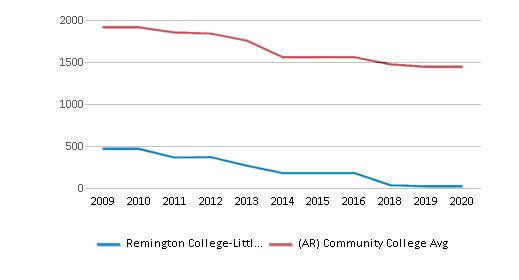
Student : Teacher Ratio
3:1
13:1
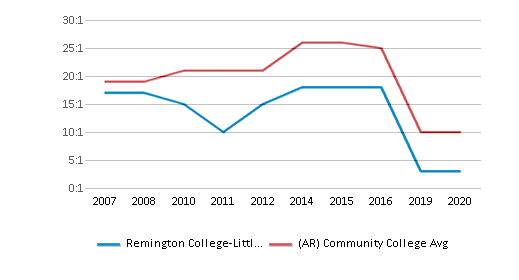
# Full-Time Students
21 students
595 students
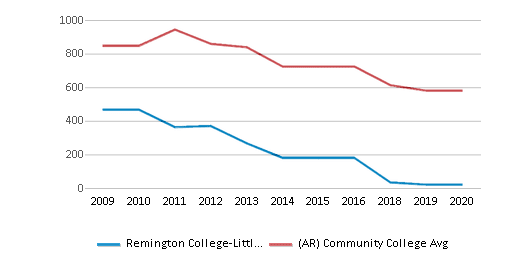
# Part-Time Students
n/a
1,058 students

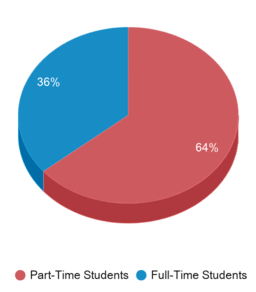
# Enrollment Undergraduate
284 students
217 students
# Full-Time Undergraduate Students
21 students
595 students
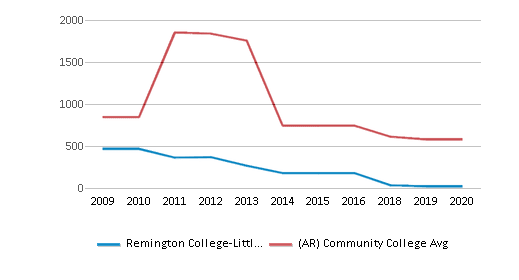
# Full-Time Graduate Students
n/a
15 students
# Part-Time Undergraduate Students
n/a
1,058 students
# Part-Time Graduate Students
n/a
38 students
Total Dormitory Capacity
n/a
160 students
% American Indian/Alaskan
4%
1%
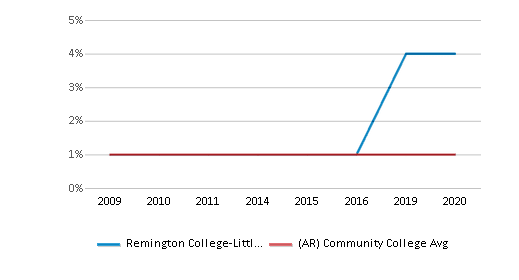
% Asian
7%
2%
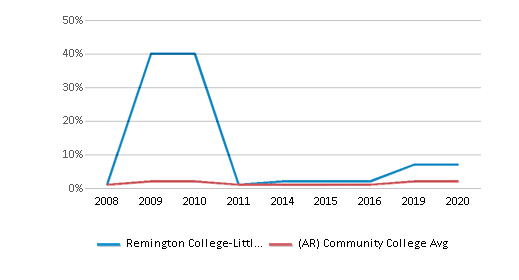
% Hispanic
2%
11%
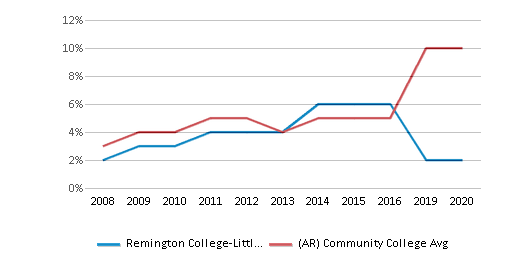
% Black
31%
18%
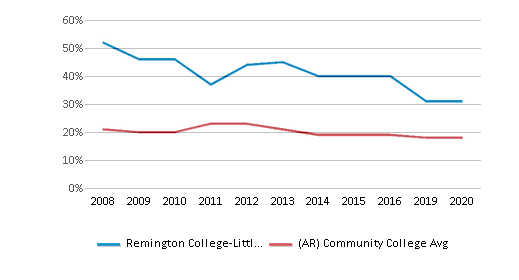
% White
13%
61%
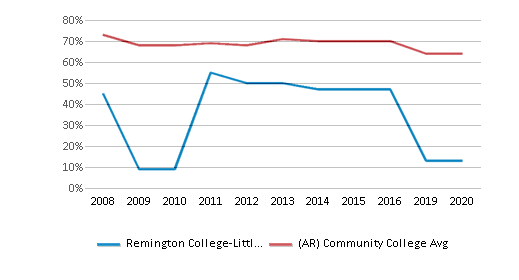
% Hawaiian
n/a
1%
% Two or more races
18%
4%
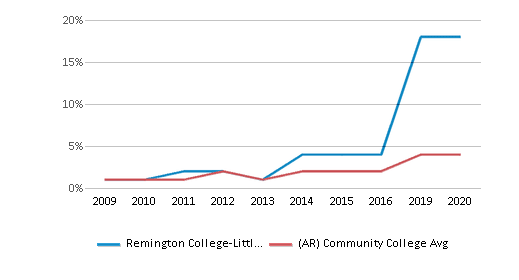
% Non Resident races
18%
1%
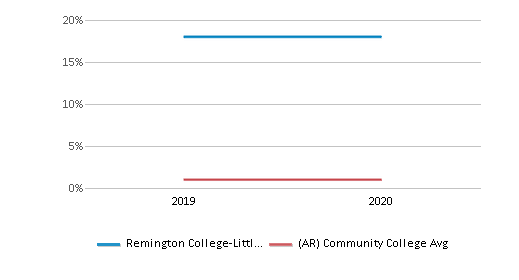
% Unknown races
7%
1%
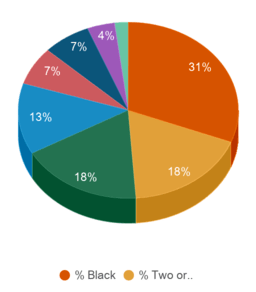
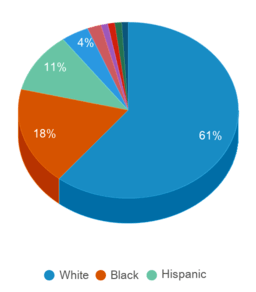
Diversity Score
0.85
0.58
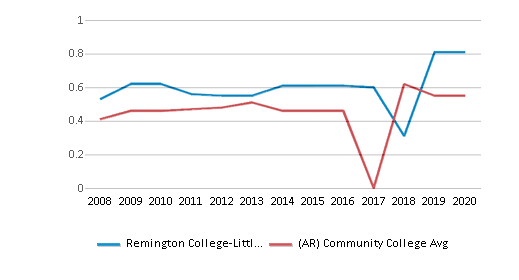
College Completion Rate (Students who graduate in less than 4 years)
9%
30.54%
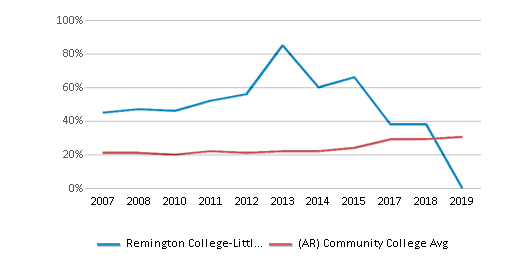
College Completion Rate (Students who graduate in 4 years or more than 4 years)
n/a
0.3095%
Average Graduate Earnings (10 Years)
$26,700
$28,600
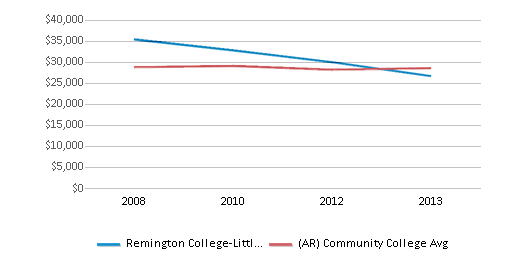
Tuition and Acceptance Rate
In-State Tuition Fees
$15,995
$2,994
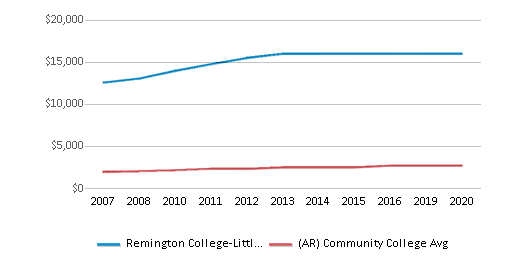
Out-State Tuition Fees
$15,995
$4,750
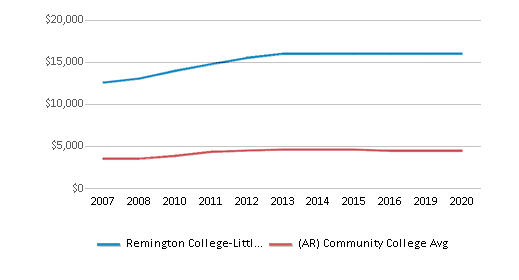
% Students Receiving Some Financial Aid
100%
94%
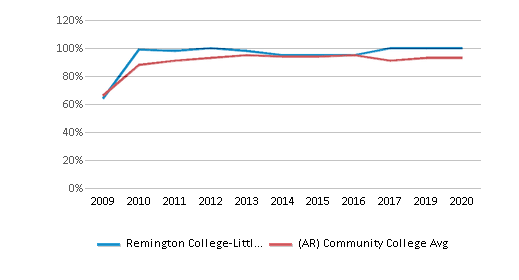
Median Debt for Graduates
$13,910
$9,750
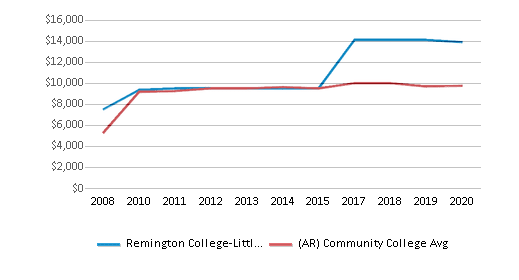
Median Debt for Dropouts
$4,750
$5,300
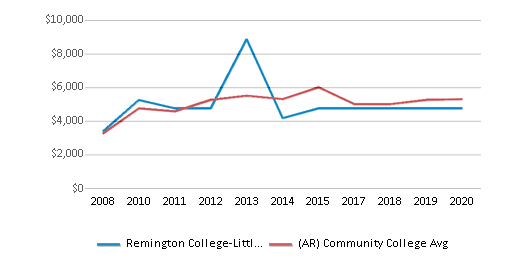
Acceptance Rate
69%
100%

SAT Reading
n/a
540
SAT Math
n/a
520
SAT Writing
n/a
515
ACT Composite
n/a
22
ACT English
n/a
22
ACT Math
n/a
21
Source: 2020 (or latest year available) Integrated Postsecondary Education Data System (IPEDS)
Frequently Asked Questions
How much does Remington College-Little Rock Campus cost?
Remington College-Little Rock Campus's tuition is approximately $15,995 for In-State students and $15,995 for Out-State students.
What is the acceptance rate of Remington College-Little Rock Campus?
The acceptance rate of Remington College-Little Rock Campus is 69%, which is lower than the state average of 100%.
Recent Articles

Obtaining Your Bachelor's Degree at a Community College
Explore the evolving landscape of community colleges offering bachelor's degrees, addressing affordability, accessibility, and workforce needs.

A to Z of Community College Certificates and Courses
From business and healthcare to technology and skilled trades, the article showcases the breadth of options available to students seeking to enhance their knowledge, develop new skills, or pursue career advancement.

What is a Community College?
This comprehensive guide explains what a community college is, its history, and its role in higher education. It covers the types of programs offered, differences from four-year colleges, benefits of attending, and important considerations for prospective students, providing valuable insights for those exploring educational options.





